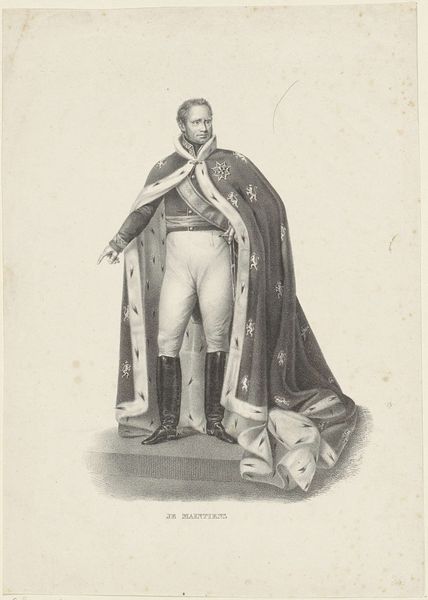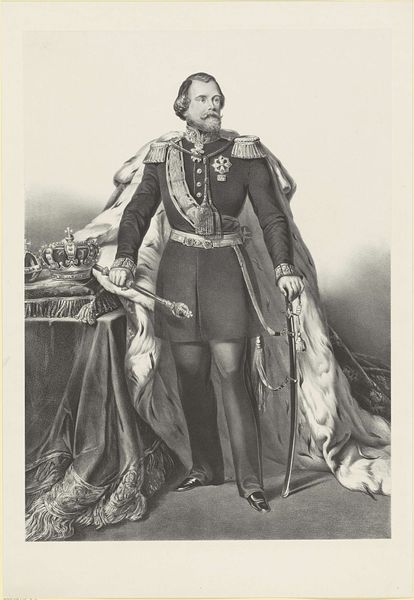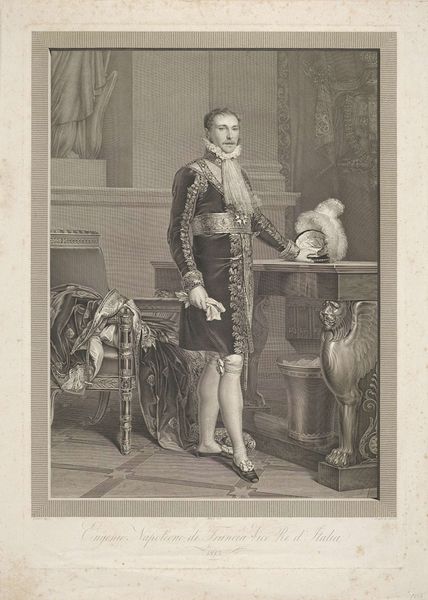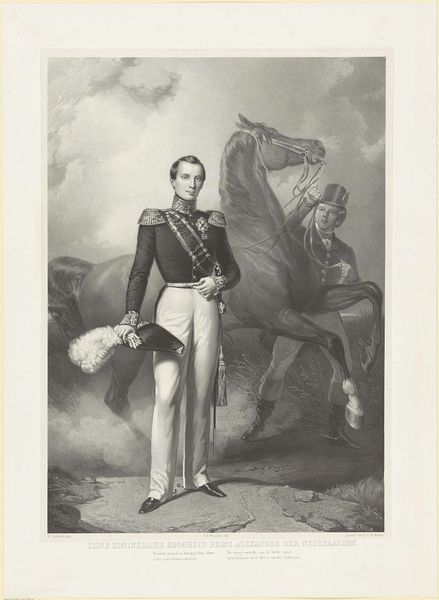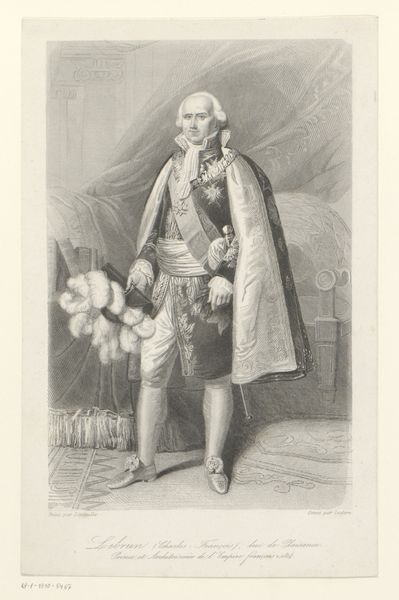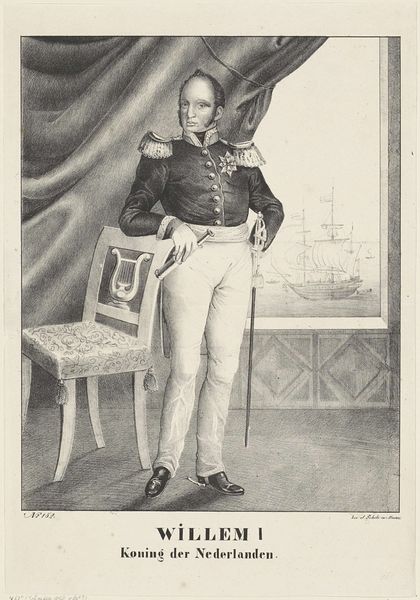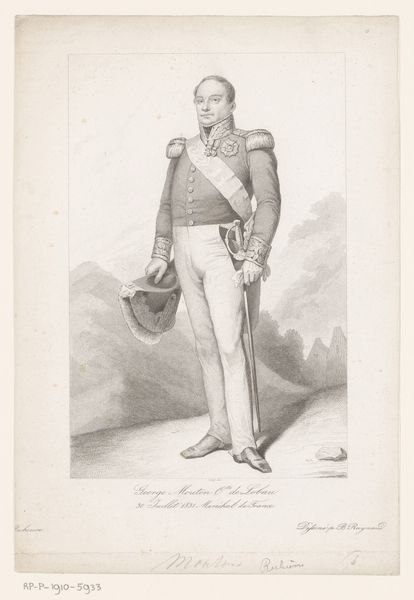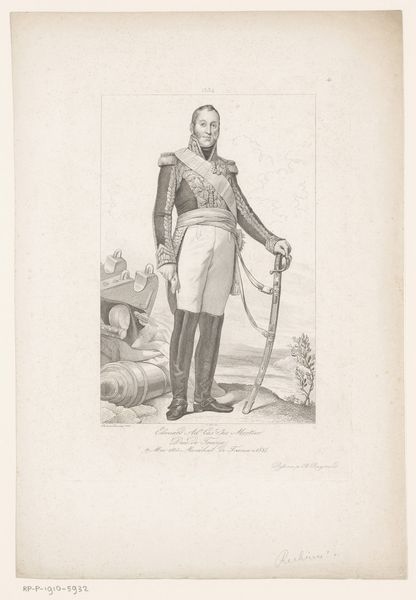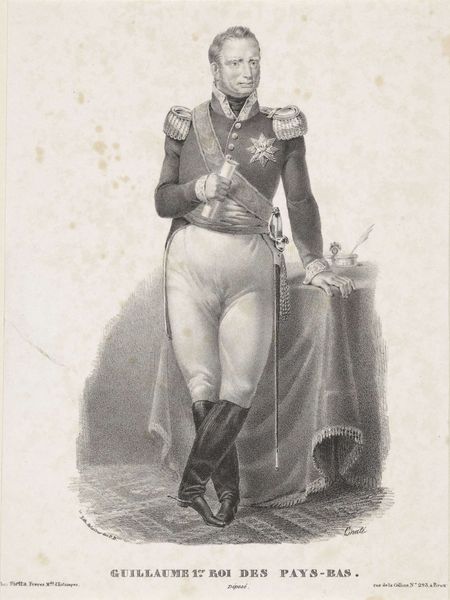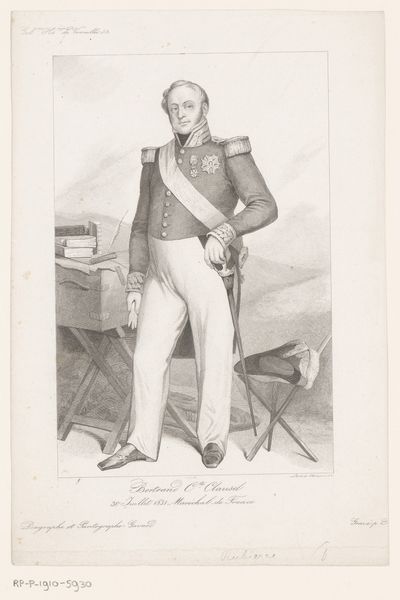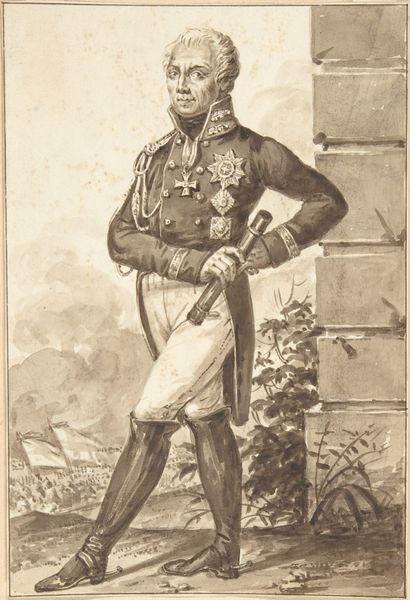
Portret van Willem I Frederik, koning der Nederlanden 1815 - 1861
jeanbaptistemadou
Rijksmuseum
engraving
portrait
pencil drawn
neoclacissism
old engraving style
form
pencil drawing
19th century
line
portrait drawing
history-painting
academic-art
engraving
realism
Dimensions: height 362 mm, width 260 mm
Copyright: Rijks Museum: Open Domain
Editor: Here we have Jean-Baptiste Madou's "Portret van Willem I Frederik, koning der Nederlanden," created sometime between 1815 and 1861. It's an engraving, quite stately, very formal. What catches your eye when you look at it? Curator: It speaks volumes about the constructed image of monarchy, doesn’t it? Notice the deliberate staging – the crown, the regal robes, even the document he points to. These are all carefully chosen symbols designed to project power and legitimacy. But I wonder, who was the intended audience, and what message was Madou trying to convey to them during this specific historical period? Editor: Good question! Was this image meant for the elite or mass consumption? Curator: That's a key question! Given the engraving medium, which allowed for wider distribution, and the socio-political climate, one could argue this image served as propaganda, reinforcing the King’s authority among a broad audience. It's a public relations piece of its time. Editor: So, it’s not just about capturing the likeness of the king, but about controlling his image and its reception. Is that fair to say? Curator: Absolutely. Consider how the setting – the throne, the rich fabrics – contribute to this carefully crafted persona. And how the composition and his body language – a confident stance, the directing gesture – reinforce this message. What do you think the inclusion of the crown and the document imply? Editor: Maybe that it’s all about tradition and legitimacy... that the King is referencing back to certain founding documents to try and portray him in the most powerful position. Curator: Precisely. And it reminds us that art isn’t created in a vacuum, but reflects the values and power structures of its time. Editor: It's fascinating to unpack how much these carefully constructed images tell us about the role of art in shaping public perception. I never thought an engraving could have so many layers! Curator: Indeed! By analyzing its historical context, the visual language, and its potential audience, we gain a deeper understanding of art's complex relationship with power and society.
Comments
No comments
Be the first to comment and join the conversation on the ultimate creative platform.

